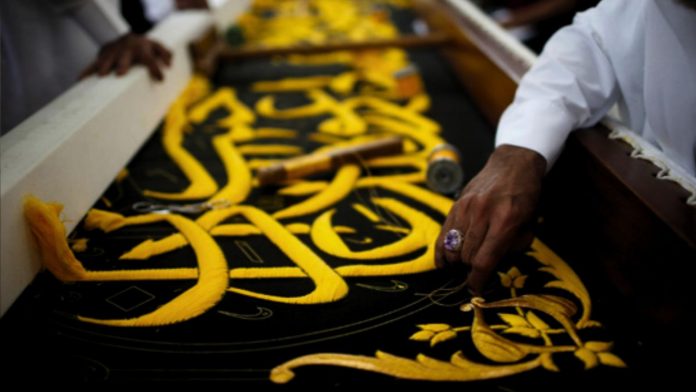The Kiswa (Ghilaf-e-Kaaba), a black silk cloth with self-embroidered calligraphies used to cover the Kaaba in Mecca, was discontinued in Egypt in 1927.
However, thanks to the efforts of 160 skilled craftsmen who produce the intricate piece, the practice has been revived in recent years.
The Kiswa weighs 670 kg and is made of 120 kg of gold and 100 kg of silver thread, which is used to sew Quranic verses onto the fabric.
Until 1927, the Egyptians would manufacture the Kiswa and parade it before the hajj season. The late Saudi King Abdel Aziz Al Saud, however, ordered the establishment of a factory to manufacture the Kiswa, putting an end to this tradition.
It weighs 670 kg and is made of black silk. To embroider its Quranic verses, an estimated 220 kg of gold and silver thread is required with 658 square meters in size.
The Kiswa is currently created in about 8 months by 137 workers. The embroidery process is being accelerated by more sophisticated machinery.
Estimates vary, but it is estimated to cost around 22 million SAR, or about $6 million USD.
The Kaaba cover is changed every year on the Day of Arafah, which falls on the ninth day of the Hajj month of Dhu al-Hijjah.


